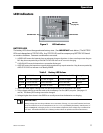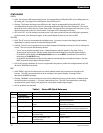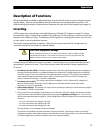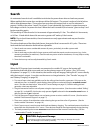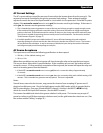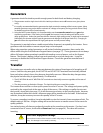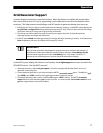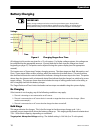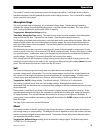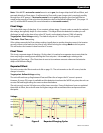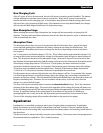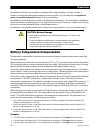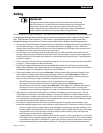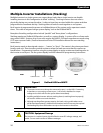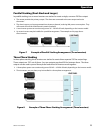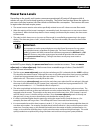
Operation
900-0112-01-00 Rev A 19
The initial DC current is the maximum current the charger can deliver. It will begin at the charger’s
specified maximum, but will gradually decrease as the voltage increases. This is a tradeoff in wattage
and is normal for the charger.
Absorption Stage
This is the second stage of charging. It is a constant-voltage stage. Current varies as needed to
maintain the voltage, but will typically decrease to a very low number over time. This “tops off the
tank”, leaving the batteries at essentially 100% of capacity.
Target point:
Absorption Voltage
setting.
Time limit:
Absorption Time
setting. This timer counts down from the inception of the Absorption
stage until it reaches zero. The timer can be viewed. (See the system display manual.)
The charging of multiple stacked inverters is synchronized and is governed by the master. When the
master inverter reaches the end of Absorption (and other stages), the slaves will exit Absorption as
well, even if their timers have not expired. The remaining time for the slaves will be retained in the
timer for each inverter.
The Absorption timer does not reset to zero when AC power is disconnected or reconnected. It only
resets to zero if it runs out, or if an external STOP BULK command is sent. The rest of the time, it retains
any remaining time. It adds more time to the Absorption period whenever the batteries fall below a
certain voltage. (See page 21 for more information on how the timer works.)
If the voltage exceeds the Absorption voltage setting (usually due to another charging source), the
inverter(s) can sell current to the loads (or the source) in an effort to bring the voltage
down
to the set
point. This will reduce the inverter’s draw from the AC source.
Sell
This is not a charging stage and is only used once the batteries are recharged. Sell is a
constant-voltage mode of operation. The inverter cannot import current to the charge batteries to
this value, but it can export any excess current to hold them at a constant voltage. (Usually excess
current comes into the batteries from a PV array, wind turbine, or similar renewable source.)
Target point:
Sell RE
voltage setting. The default setting is 13.0 Vdc (in a 12-volt system).
This setting is typically lower than the Float voltage setting. Although the batteries are not
discharged, they are maintained at a somewhat lower voltage so that the maximum amount of power
can be exported.
Excess power is sent first to any loads on the inverter’s output, in what is known as “zeroing”. If the
exported power exceeds the loads, the remainder is sold back to the utility grid, using the inverter’s
AC input terminals. The unit will maintain this activity for as long as excess power is available. If
excess power is not available, the battery voltage will drop below the
Sell RE
voltage and the unit will
leave this stage.
See page 23 for more notes on the Sell feature.
Silent
The inverter remains on the AC source, but the charger is inactive. It enters this mode when there is
not enough energy to sustain selling. The batteries are not in significant use by the inverter, but they
are also not being charged by renewable sources. The battery voltage will naturally decrease when
not maintained by another means.
Target point:
Refloat Voltage
setting, which activates the charger again. The default set point is
12.5 Vdc (in a 12-volt system).



